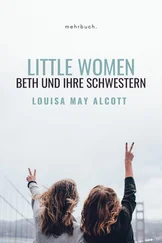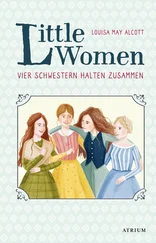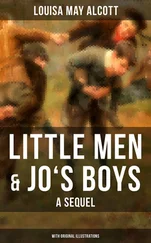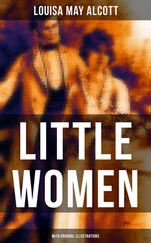If I were a young girl in 2004 reading Little Women for the first time, would I compare Jo to some of today’s fictional teen heroines, such as Buffy Summers, of television’s Buffy the Vampire Slayer? As teenage girls can now be seen on television annihilating demons with nigh impunity (after some natural concern, of course, over how this behavior will affect their popularity in high school—some things never change), Jo comes off as quaintly mundane at best, wimpy and suspiciously susceptible at worst. Yet it is curious, and in this context somehow appropriate, that the hugely popular series Buffy should reference the hugely popular novel Little Women directly. In one of the series’ last episodes, the town of Sunnydale’s outwardly insipid yet inwardly demonic founder and former mayor, Richard Wilkins III (who, a few seasons previously, had transformed into a giant serpent and been blown up along with the high school on Buffy’s graduation day), raises the topic of his favorite character in Little Women. He claims that most people would guess he’d like Beth—for her easy-prey weakness, one supposes; but he instead prefers Meg, for her propriety and ladylike demeanor. Meg is clearly a contrast, one might say, to Buffy, the mayor’s ass-kicking nemesis. Mayor Wilkins also fondly recalls a scene he treasures: the time Jo burns Meg’s hair with a set of curling tongs. The reason why this commentary is so funny lies at the heart of recent critical debates about Alcott’s most famous novel. What can Jo March offer young girls that heroines like Buffy Summers cannot—even after earlier marvels of powerful girlhood, such as Astrid Lindgren’s 1950s super-strong heroine, Pippi Longstocking?
Much of Jo’s charm and appeal lie in the idea that, unlike Buffy Summers, she is not a superhero (although Beth’s goodness certainly appears superpowered). As Alcott writes toward the end of the novel, “Jo wasn’t a heroine, she was only a struggling human girl like hundreds of others, and she just acted out her nature. . . . She had often said she wanted to do something splendid, no matter how hard; and now she had her wish, for what could be more beautiful than to devote her life to Father and Mother, trying to make home as happy to them as they had to her? And if difficulties were necessary to increase the splendor of the effort, what could be harder for a restless, ambitious girl than to give up her own hopes, plans, and desires, and cheerfully live for others?” (p. 420). We note, of course, that Alcott made such sacrifices in her own life, and her point, although it may be hard to swallow, is that heroics come in both big and small proportions.
Overall, then, how relevant can Little Women be to twenty-first-century youth? As Americans, for better or worse, remove themselves further from lifestyles like those of Alcott’s close-knit community of charitable neighbors, is Little Women to be relegated to solely period-piece status—fine fodder for costume-drama films and small children’s bedtime stories but not much else? Particularly following feminist critiques of Alcott’s domestic novel, readers have been more vocal about finding it sentimental, even sometimes cloyingly sweet, by more modern standards. Yet it is a testament to Alcott’s descriptive powers that though the family’s shared activities may seem strange to a twenty-first-century audience, their utter sweetness and quaintness are in their own way rather stunning and just might provoke wistful feelings for a simpler kind of family life among even cynical readers—paradoxically just as the family’s episodes of cloying togetherness may sometimes raise their gorge. We may wonder at how Beth, for example, could be so unnaturally shy as to dread being the center of attention at her own birthday parties—where members of her loving, indulgent family are the only guests! No matter how unrealistic or saccharine-sweet we may find Beth’s goodness, many readers find it difficult to avoid tears at her fate.
Other sequels in the March family saga followed Little Women and continued its popular tradition. The first, Little Men: Life at Plumfield with Jo’s Boys (1871), describes events at the school Jo founds and the adventures of her diverse crew of pupils—all little boys, with the exception of Jo’s nieces and the extremely naughty girl Nan, an even more tomboyish specimen than Jo herself had been as a child. The last book in the trilogy, Jo’s Boys, and How They Turned Out (1886), would be Alcott’s final novel, published only two years before the author’s death. Written slowly, while Alcott was in poor health, the book centers on romance plots between the younger characters introduced in Little Men.
Several film adaptations of Little Women have appeared over the years, with appeals to successive generations of readers. Katharine Hepburn brought Jo so vividly to life in director George Cukor’s classic 1933 movie version (released only six years after the poll that found the novel more popular than the Bible) that Hepburn’s particular brand of sharp New England eccentricity has been forever linked to that character. Her portrayal has colored critics’ judgments of other screen depictions of Jo—such as June Allyson’s in the blander 1949 color version—and has set these later actors up for unwinnable comparisons. A more feminist film version of Little Women, from 1994, casts activist actor Susan Sarandon as Marmee, a very clear, pointed choice, and Winona Ryder, whose other roles many teen girl rebels have identified with, as a Jo March for the 1990s. This version also updates Professor Bhaer, doing the rumpled nineteenth-century scholar a tremendous favor by metamorphosing him into darkly handsome actor Gabriel Byrne.
New to bookstore shelves as I write this introduction is novelist Katharine Weber’s contemporary spin on the Marches’ story, titled The Little Women. Weber’s third novel disrupts the sweet perseverance the girls demonstrate in Alcott’s original. Here, the three New York City Green sisters—Margaret, Joanna, and Amy (Beth had been a doomed turtle)—find out via e-mail that their English-professor mother has been having an affair. They run away from home in disappointment and outrage after their father blandly forgives her, and the younger sisters move into Margaret’s off-campus apartment at Yale University, where they try to set up an independent household. Weber even includes a lesbian subplot. Rather than employ a moralistic, Alcott-like omniscient narrator, Weber has Joanna tell the story from her perspective, with critical commentary in the form of “readers’ notes” from the other sisters. By granting the Green sisters a kind of divorce from their parents, Weber addresses the wishes of those readers who wanted alternative plots for Alcott’s Meg, Jo, Beth, and Amy. Although I haven’t yet found one, I wouldn’t be surprised to see an Internet site (like those that exist for pop-culture icons like Buffy the Vampire Slayer, for example) where Alcott admirers can post fan fiction they’ve composed based on the original. In fact, this is a great idea. If we don’t agree with the way Alcott handles the girls’ fates, we can take matters into our own hands—although we may find the task of creating an alternate universe as fully realized and as paradoxically timeless as Little Women’s much more difficult than we’d imagined.
Camille Cautihas a Ph.D. in English from Columbia University. Her dissertation concerns the Catholic conversion trend among the London avant-garde in the 1890s, including such figures as Oscar Wilde, Ernest Dowson, John Gray, and Michael Field. Other academic inter ests have included nineteenth- and twentieth-century English poetry (in particular, John Keats, the Pre-Raphaelites, W. B. Yeats, and the connections between them), and Irish literature generally. She has also published on Italian-American studies. Cauti is a teacher, editor, and critic in New York. She also wrote the introduction and notes to the Barnes & Noble Classics edition of Oscar Wilde’s The Picture of Dorian Gray.
Читать дальше
Конец ознакомительного отрывка
Купить книгу












